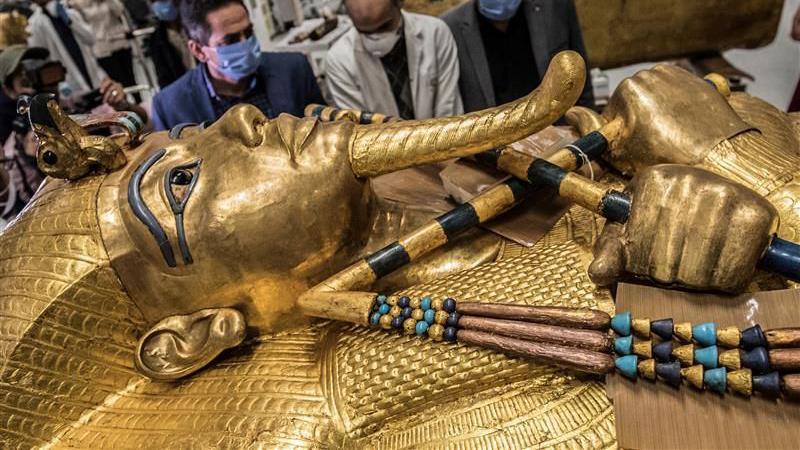Tutankhamun: How Englishmen uncovered the boy-king
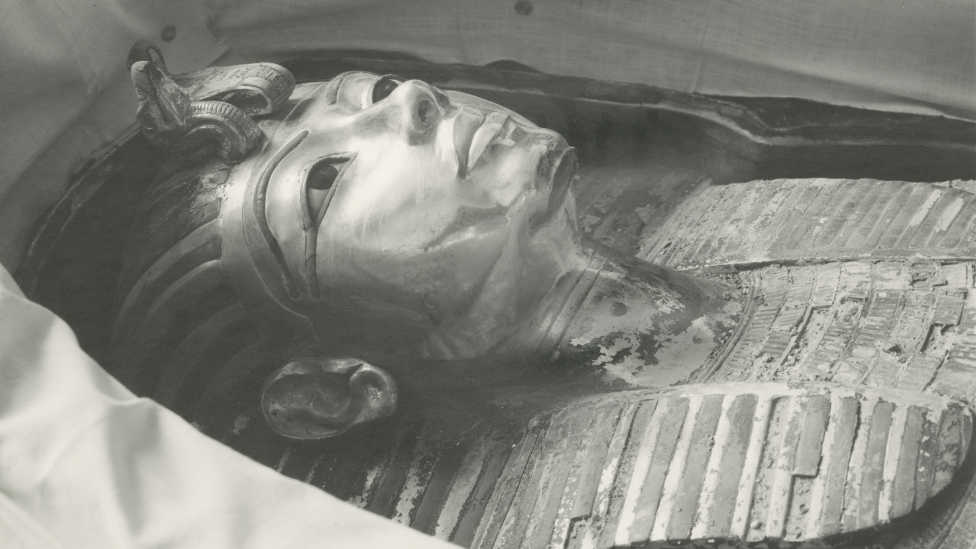
Tutankhamun's tomb was discovered almost wholly intact in 1922
- Published
A century ago, the mummified body of the ancient Egyptian pharaoh Tutankhamun was unwrapped for the first time - having been entombed thousands of years before.
To mark the hundred-year anniversary, a new database containing thousands of personal records and documents from the time has been opened at the University of Oxford - making them fully accessible for the first time.
The tomb of the former boy-king was discovered in 1922 by English archaeologist Howard Carter and his patron Lord Carnarvon from Hampshire.
And between 11 and 19 November 1925, the pharaoh's body was meticulously unwrapped in a heavily symbolic and well documented process.
It was on 26 November 1922 that Howard Carter held up a candle to peer through a tiny breach chiselled in a doorway sealed for three millennia.
His partner and financial backer, Lord Carnarvon, waited anxiously nearby.
The tale of the pair's incredible archaeological discovery, after years of digging in Luxor with little to show for it, enthralled the world.
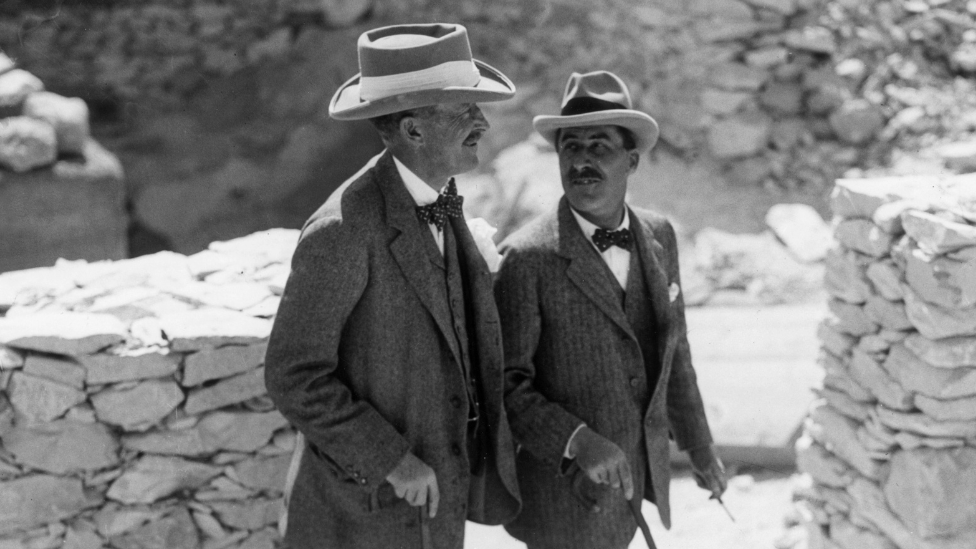
Lord Carnarvon and Howard Carter were the two "unlikely Englishmen" who discovered the tomb
Lord Carnarvon has often been portrayed as merely Carter's patron but "without him we probably would not have found the tomb of Tutankhamun", the current Lady Carnarvon explained.
She owns and runs the family's ancestral seat at Highclere Castle, in Hampshire, alongside her husband, Lord Carnarvon's great-grandson the eighth Earl of Carnarvon.
"He's often misrepresented today," she said of Lord Carnarvon. "People say he's just a one dimensional financier - far from it."
"He was a great traveller, a restless man, and he was always trying to find something else, which I think is innate in all of us," she explained.
"He spent the winter months out in Egypt, he became very adept - he wasn't a trained Egyptologist, but nor was Howard Carter."
"It was two unlikely Englishmen in some ways, but their resilience, passion, obsession, and obviously his money, led to the discovery of Tutankhamun."
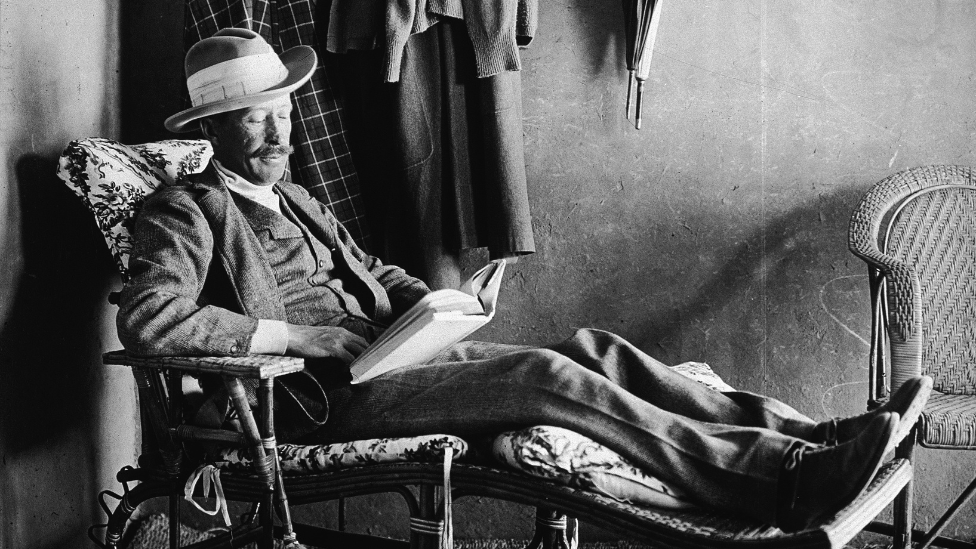
Lady Carnarvon said her great-grandfather-in-law had been "misunderstood"
Along with photographer Harry Burton, Carter and Lord Carnarvon meticulously documented the tomb's more than 5,000 objects.
The collection, which includes thousands of photographs, drawings and notebook pages, was donated to the Griffith Institute, the centre for Egyptology at the University of Oxford, after Carter's death in 1939.
"These records show how the tomb looked like when it was discovered, so this shows you how Howard Carter and his team saw the tomb," Daniela Rosenow, manager of the Griffith Institute and Egyptologist, said.
Now, for the first time, the records will be available to researchers and the general public on an easy accessible database created by the institute.
"We really hope this will nurture research on the objects, which is desperately needed," Ms Rosenow said.
"The tomb of Tutankhamun is still not that well published or studied, because it is not easy to access the actual objects."
"My hope is that much more will come out now everyone can search the records and do the research."
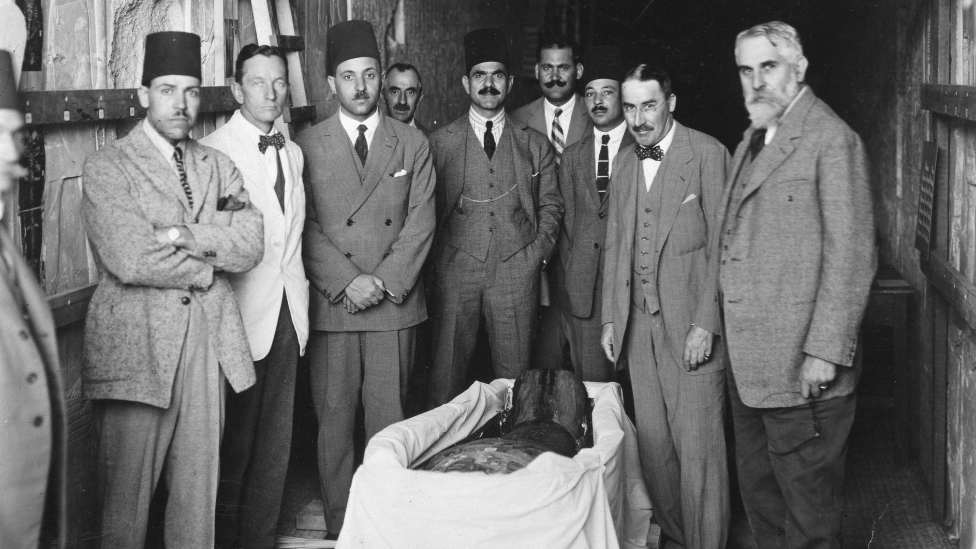
It took a committee of experts nine days to unwrap the boy-king's body
Lady Carnarvon, who has written a book on the subject, said the documents show the discovery had been the "result of hard work... and of a really well planned concessions".
"There was a plan, there was a strategy, but actually in some ways they found it against all the odds."
And on that November day more than a century ago, Carter, Carnarvon and his daughter, Lady Evelyn, first climbed in to the perfectly intact tomb of the boy-king.
Lady Carnarvon said her great-grandfather-in-law had tried to write about first seeing the chamber, but just said it was "entirely surreal".
"It was beyond anything they'd ever dreamt of," she said.
The world's media went into frenzy over the discovery, with Carter and Carnarvon becoming world famous.

Tutankhamun's burial mask was uncovered after millennia in situ
Lady Carnarvon said she believes the interest in Tutankhamun comes from the "totality of the treasures".
"It is a window back in time, of a culture which spanned 5,000 years and created works of art and architecture, such as we probably haven't created in our own world after 2,000 years."
Just months after the discovery, Lord Carnarvon died following a mosquito bite - with some in the media speculating that it was the result of a curse placed on the tomb of Tutankhamun.
"He sacrificed all that we can give," Lady Carnarvon said. "You can read into it what you will."
"I think there's a lot we don't understand in this world and the next, however you choose to interpret our imagination and our consciousness," she added.

Ms Rosenow said autopsy drawings done by Carter during the unwrapping were among her "favourite archaeological records ever"
A beta version of the Oxford database has launched, exactly a hundred years on from the unwrapping of Tutankhamun's mummy, and will showcase Carter's material from the de-mummifying process.
"We do have other royal mummies, but none before were found in their context, their tombs had all already been plundered in antiquity - this is the first and only time that a royal mummy had been discovered in situ," Ms Rosenow explained of the event's significance.
"This was all planned in a very scientific way, a committee of experts was gathered and it took them nine days to unwrap the body."
She added: "During these nine days, some of the most stunning archaeological records ever were produced."
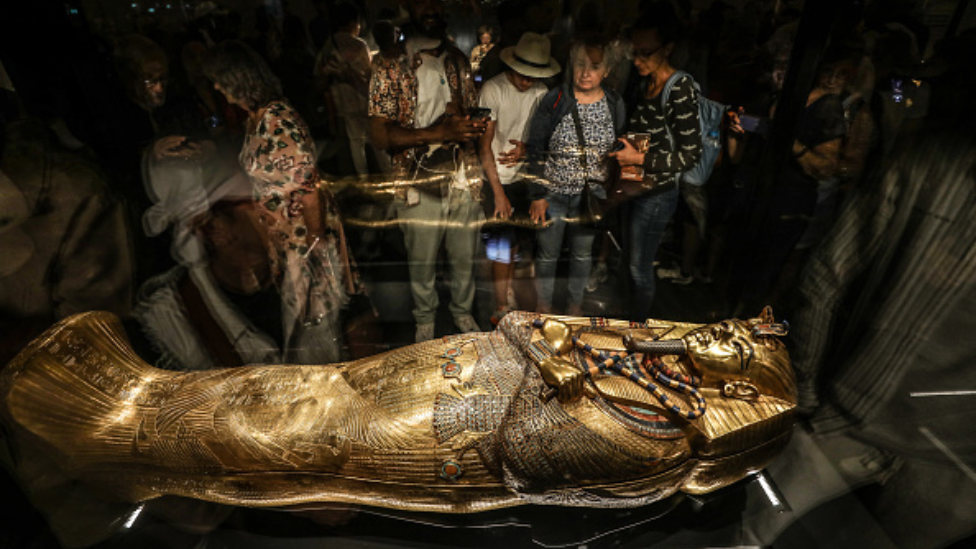
The new Grand Egyptian Museum in Cairo houses treasures from the tomb, including Tutankhamun's golden coffin
The databases launch comes just weeks after the Grand Egyptian Museum fully opened in the shadow of the Great Pyramid of Khufu at Giza.
Described as the world's largest archaeological museum, it is packed with some 100,000 artefacts - including the entire contents of Tutankhamun's tomb.
"You can now see all these objects carefully curated as individual masterpieces," Ms Rosenow said. "But not everyone can travel to Egypt, and our database will give everyone around the world the sense of how the tomb originally looked."
Once the database is completed, and the 5000 or so objects are inputted, Ms Rosenow said the next step was to create an interactive 3D digital model of the tomb as it was found.
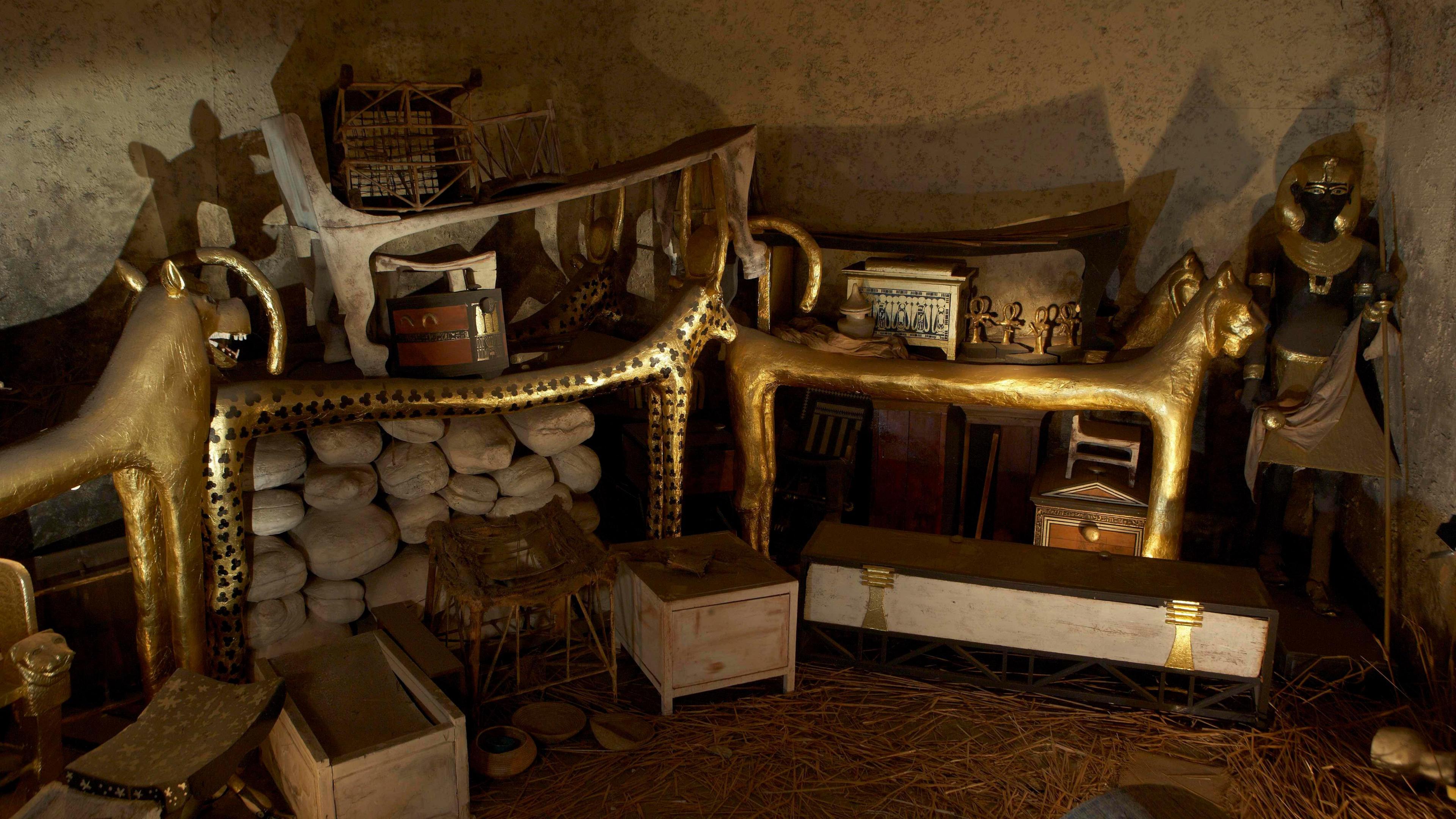
The Tutankhamun Exhibition in Dorchester gives visitors the chance to experience an exact replica of the tomb
But in Dorchester, that is already a reality. The Tutankhamun Exhibition in the town gives visitors the chance to experience an exact replica of the tomb.
Michael Ridley, the exhibition's director, said the showcase's journey from its original home at the British Museum had been an "accident of history".
Struggles to find a suitable permanent home for the display eventually ended with the choice of a redundant church in Dorset's county town.
It has remained there ever since, with more than two million people having visited it in that time.
Mr Ridley said visitors came through the doors because Tutankhamun's story was "in fact many stories".
"It is about the discovery of treasure, it's because of the wonderful gold mask that covered the head of Tut's mummy, and because of the mystery of why and how this pharaoh died at the young age of 19," he said.
Of the new database, Mr Ridley said its appeal was that "documents are the raw material of history".
"They combine with the evidence unearthed by archaeology to make sense of the past."
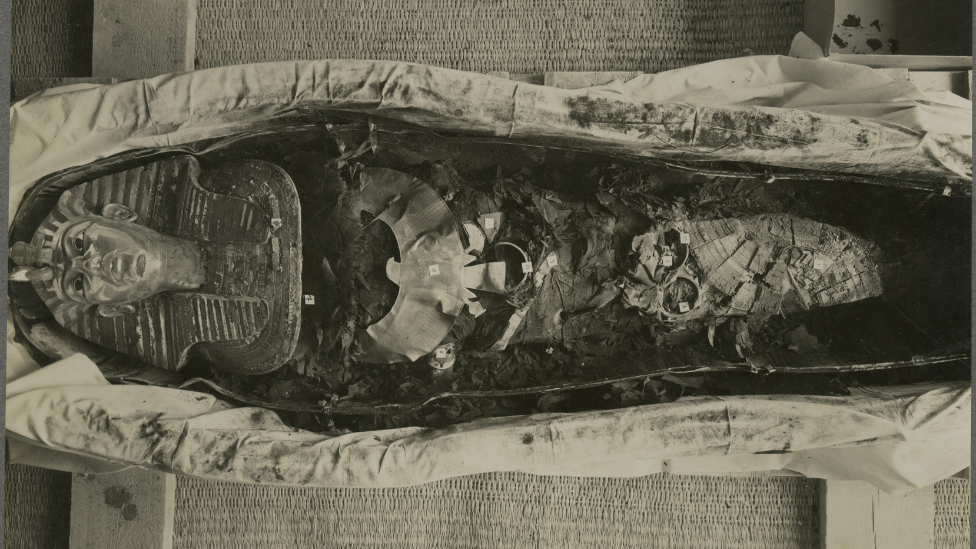
Photographer Harry Burton meticulously photographed the de-mummifying process
More than a century on from the discovery, the story of Tutankhamun and his uncovering after millennia still captivates and intrigues the world.
"I think it's like all the appeal of Rider Haggard, Indiana Jones and the missions that we set ourselves in life," Lady Carnarvon suggested on why interest remains.
"All of us are the same, and I think the ultimate desire we all have, a quest we all have, is for knowledge, or for treasure - and maybe knowledge is treasure."
But Ms Rosenow suggested a different answer for the persisting interest.
"There's this mystery about this young man who died very unexpectedly, but also it's the amazing and beautiful objects," she said.
"They are visually striking and you learn so much about ancient Egypt, but also about this young person, Tutankhamun."
"Hopefully, a 100 years on, you can actually move away from the gold and the curse and look at the young man."
Get in touch
Do you have a story BBC Oxfordshire should cover?
You can follow BBC Oxfordshire on Facebook, external, X, external, or Instagram, external.
- Published26 November 2022
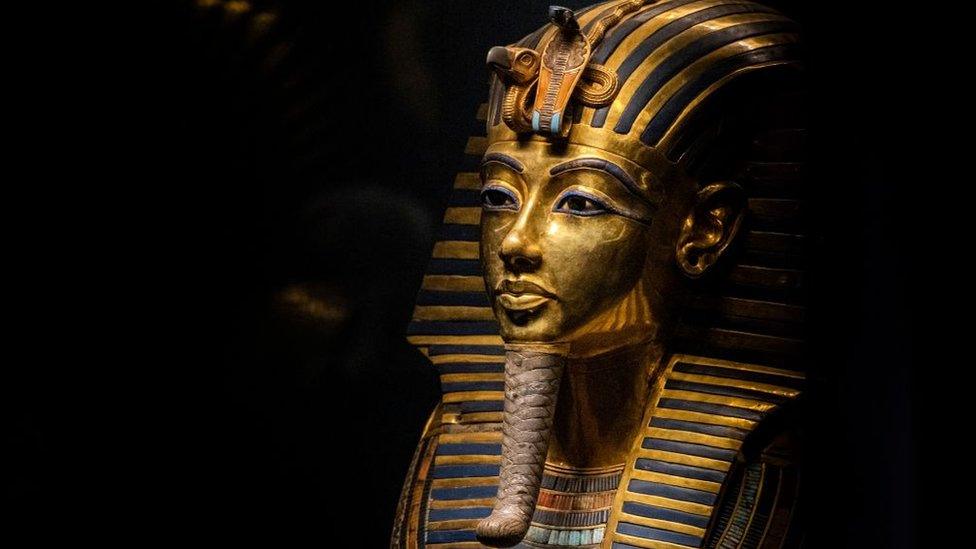
- Published11 May 2022

